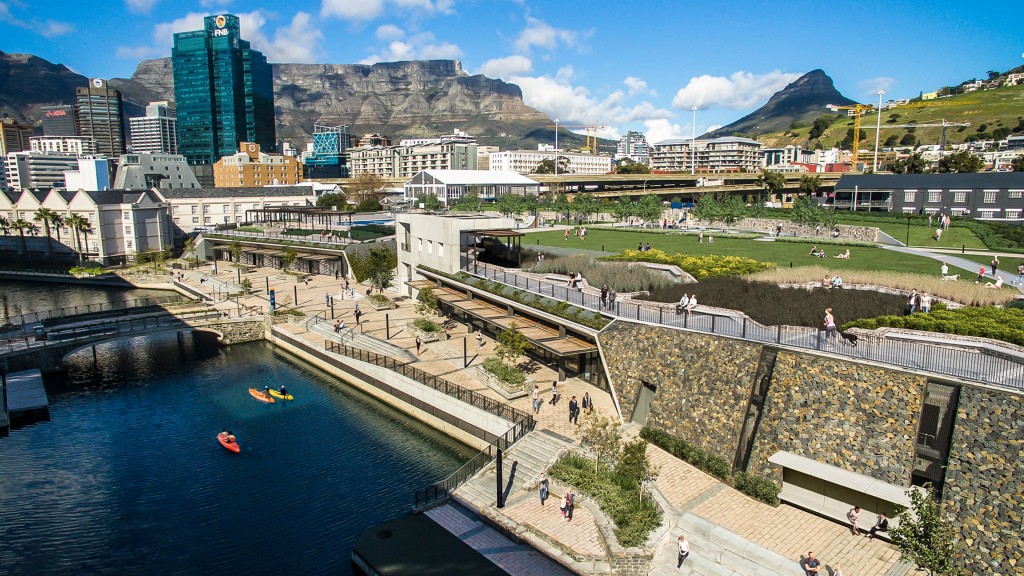
South Africa has announced completion of
the 12,000 m² Battery Park located at a key entrance to Cape
Town’s V&A Waterfront.
Designed as part of a larger urban vision for
the district by urban design and architecture
firm DHK, the
site holds a park and piazza that conceal a 1,206-bay parking facility, as well
as new pedestrian routes to increase activity in the area. The site which is of
historical importance contains the remnants of one of the city’s oldest
structures, the coastal fortification Amsterdam Battery.
Battery Park constitutes part of an urban design
framework for the V&A’s previously under-utilised Canal District that
promotes the re-connection of the historical city centre and De Waterkant to
the V&A and create a publicly accessible park.
Amsterdam Battery was built by the Dutch along Cape
Town’s coastline in 1784 to protect the city from seaborne and land attacks. In
the 1800s the structure was used to house prisoners and was later re-modelled
and strengthened by the British.
In 1905 the battery was largely demolished to make way
for railway connections to the port, leaving only a small part of its rear
curved walls. The historical remnant is now raised eight metres above the new
canal running through the site.
The various landscaped elements display the
structure’s original footprint, for example semi-circular curved pathways,
concrete additions to the rear ends, spread canal-facing walls and
concrete-clad structures giving visitors a sense of the battery’s former size.
A parallel visual connection to Cape Town’s Noon
Gun on Signal Hill has also been retained, thus preserving the site’s historic
sight line.
The intention behind the park was to activate the
canal via a range of water sports and provide a link between the V&A and
the CBD in the process encouraging a pedestrianised environment.
Connecting the battery’s original facade,
stone-filled gabion walls cover the parking facility and stone-clad planters
contain fynbos and water-wise plants. All stone used throughout the park walls
was extracted from the site during the construction process.
These elements place side by side contemporary insertions that reference the battery rather than replicating its heritage. Director at dhk and lead architect on the project, Pierre Swanepoel, said the intention was to facilitate a new hub of activity within the V&A district while at the same time being respectful to the heritage of the Amsterdam Battery.https://constructionreviewonline.com/2019/02/south-africa-completes-12000m%C2%B2-battery-park/


